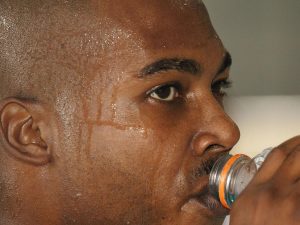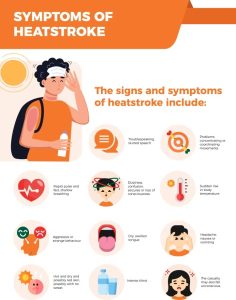Sweating during a workout is often seen as a badge of hard work and intensity, a tangible sign of burning calories and pushing physical limits. However, an intriguing phenomenon exists where certain individuals appear to barely break a sweat, even during rigorous exercise sessions.
This phenomenon raises questions about the mechanisms of our bodies and whether the absence of sweat could signal underlying health issues.
Drawing insights from medical research and expert opinions, this article dives into why some people might not sweat as much as others during physical activity and explores the circumstances under which this could be problematic.
 Understanding sweat and its functions
Understanding sweat and its functions
Sweating is the body’s natural mechanism for regulating temperature. When the body heats up during exercise, sweat glands release moisture to cool the skin.
According to health experts at the Mayo Clinic, sweating rates can vary significantly among individuals due to factors like genetics, fitness level, and environmental conditions.
However, when someone doesn’t sweat enough, known medically as hypohidrosis, it can hinder the body’s ability to cool down, potentially leading to overheating or heatstroke.
Factors influencing sweat production
Several factors influence how much one sweats during physical activity. Research from Dr. Ayesha Akinkugbe, a Senior lecturer and consultant Dermatologist and Genitourinary physician at the College of Medicine, University of Lagos, indicates that genetics plays a crucial role in determining sweat gland density and function.
Additionally, acclimatization to heat, hydration levels, and body composition are significant factors. Individuals who are more acclimated to hot environments or have a higher fitness level may sweat more efficiently, whereas factors like dehydration can impair sweat production.
 When lack of sweat becomes a health concern
When lack of sweat becomes a health concern
The absence or significant reduction of sweat during intense workouts can signal underlying health issues. According to a research by Dr. Oguamanam Okezie Enwere, a Nephrologist (specialist in kidney care) in Orlu, Imo State, conditions such as hypohidrosis or anhidrosis, where the body produces no sweat, can pose serious health risks, including overheating and heat stroke.
These conditions can be congenital or acquired due to medication side effects, skin damage, or neurological disorders.
Diagnosing and managing sweat-related disorders
Diagnosing sweat-related disorders involves a comprehensive evaluation by healthcare professionals.
The Mayo Clinic outlines several diagnostic tests, including thermoregulatory sweat tests, to assess sweat production and identify potential causes of hypohidrosis. Management strategies might involve lifestyle adjustments to minimize overheating risks, such as avoiding high-temperature environments, staying hydrated, and wearing breathable clothing during exercise.
The role of fitness and acclimatization
Fitness level and heat acclimatization significantly impact sweat production during exercise. Research conducted by the Nigeria Association of Sports Science & Medicine suggests that individuals who are physically fit and acclimated to warm environments tend to start sweating sooner and more efficiently to cool the body effectively.
Understanding the factors that influence sweat production and recognizing when the lack of sweat could be problematic are crucial
This adaptation underscores the importance of gradual heat exposure and regular physical activity in enhancing the body’s thermoregulatory responses.
Conclusion
While not sweating during exercise might seem advantageous to some, it can be a double-edged sword, signaling inefficiencies in the body’s cooling mechanisms or underlying health issues.
Understanding the factors that influence sweat production and recognizing when the lack of sweat could be problematic are crucial for maintaining optimal health during physical activity. By paying attention to our bodies’ signals and seeking medical advice when necessary, we can ensure that our workouts are not only effective but also safe.


